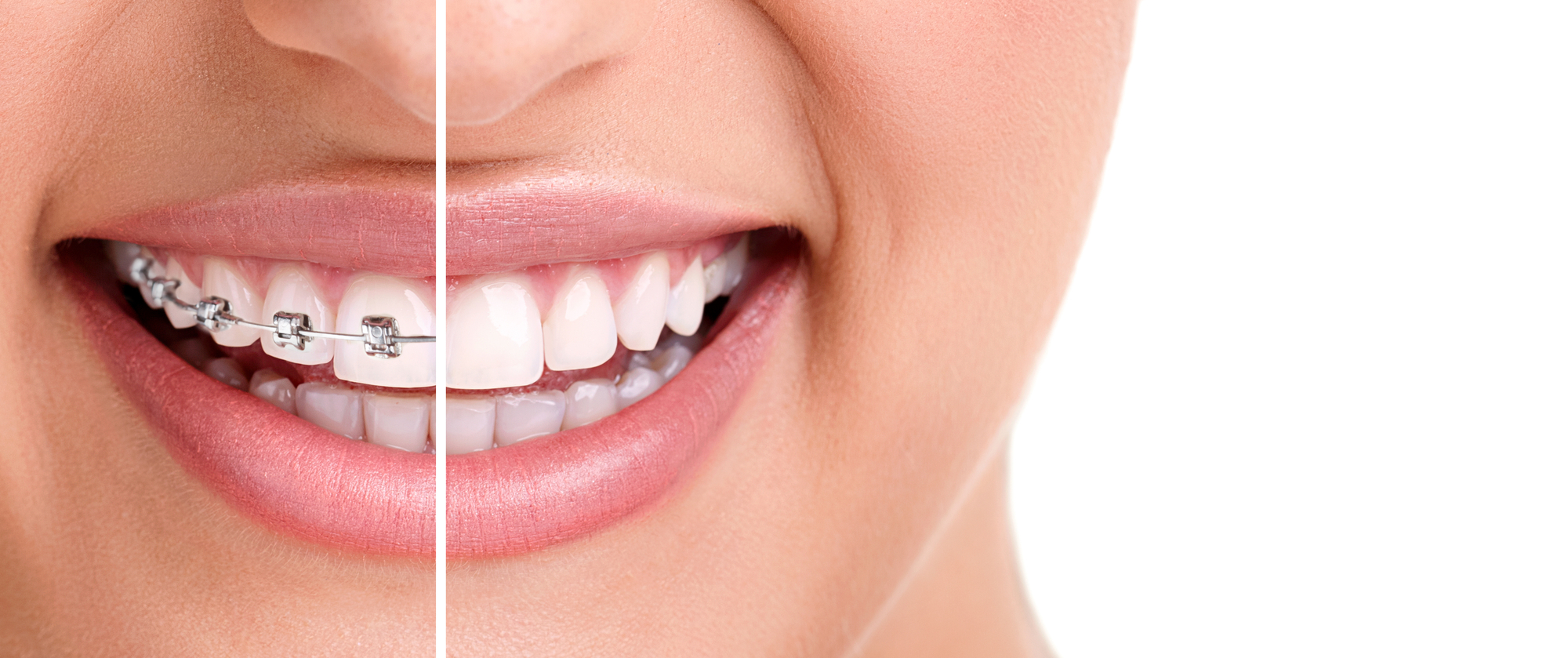Adult patients who come to our practice seeking orthodontic care frequently have different concerns about their possible method of treatment than our adolescent patients do. Often these patients’ problems with crowded, protruding, or crooked teeth are long-standing, because they didn’t have the opportunity for orthodontic treatment earlier in life. Sometimes they’re seeking correction for issues that have slowly developed as their teeth lapsed back into misaligned positions after treatment many years ago. The two primary methods of treatment, braces and Invisalign, each have features and drawbacks that adult patients should consider when choosing which modality works best for them.
How They Work
Braces and Invisalign both work on the same principle—they exert pressure on your teeth to move them. Braces do this via brackets that are bonded to the teeth and attached to a wire that guides them into the desired position. Invisalign achieves the same effect with a series of clear plastic removable aligners that are customized to fit a patient’s mouth. Both are approved by the Food and Drug Administration (FDA) for the treatment of malocclusion.
If either method works, what influences patients to choose one way over another? Many factors influence that decision, including aesthetics, comfort, care and cleaning, eating restrictions, the treatment process, and of course, the nature of the patient’s alignment problem. What is right for one individual may not work for another—we advise every patient to carefully consider what’s involved as they make their own choice.
Comparing Braces and Invisalign
The most obvious difference between braces and Invisalign is aesthetics. Traditional metal braces are clearly visible, and even clear braces have a metal wire running across the teeth. Adult patients in professional positions, or just not wanting to widely advertise the fact that they’re having their teeth straightened, often want to avoid braces for that reason alone. There’s nothing wrong with that—with treatment lasting a year or more, that’s a long time to feel uncomfortable or unhappy with how you look. Invisalign trays, by contrast, are virtually unnoticeable, even at close range.
Comfort is another key consideration. According to research, patients with braces tend to experience more discomfort than those using Invisalign, particularly in early treatment or right after the braces are tightened. The brackets can also scrape against the inside of the mouth. Clear aligners are smooth, so they don’t have that issue, but they do take some getting used to. Patients may speak with a lisp or have increased salivation for a few days when they start treatment.
Care and cleaning are essential for the health of your teeth whether you’re undergoing orthodontic treatment or not. With braces, you should brush after every meal and snack and floss daily, using a floss threader to get behind the orthodontic wire. An interdental brush can also help get into every crevice. If you’re using Invisalign, you must also brush and floss each time you eat or drink before you put your aligners back in, to avoid trapping decay-causing particles against your teeth.
Braces require care when eating to avoid damaging brackets. Sticky foods like gum or taffy and hard foods like whole apples and carrots should be off-limits. Popcorn is also bad for braces, because it has hulls that can get stuck in braces, between teeth, or in the gums and are hard to remove. Invisalign trays are taken out completely while eating and drinking, no foods are restricted during treatment.
The process of getting either braces or Invisalign starts similarly—a patient undergoes a thorough exam, including X-rays, to determine the best course of treatment. With braces, brackets are affixed to the teeth and threaded with a wire. For Invisalign, the orthodontist takes a digital scan of the teeth to create the custom-fit aligner trays. Braces typically require more follow-up visits for tightening and adjustments, while aligner trays can be switched out at home (usually every week). That independence can be an advantage if a patient has significant issues scheduling regular appointments. Also, appointments can be further apart, like every 2–3 months (whereas with braces you need to be seen every 4–6 weeks).
It’s important to note that Invisalign relies on patient compliance to be effective, because trays must be worn for at least 22 hours a day. For patients who know they won’t remember to put their aligners back in or change them on schedule, braces may be a better alternative to achieve the results they want.
Finally, a patient’s individual alignment problems can influence the choice of treatment. Most of the time, either braces or Invisalign can work to correct orthodontic problems, so it is really up to the patient which they prefer. However, in certain rare and complex cases involving issues like very large gaps, rotated teeth, or severe crowding, braces may be more effective. If your exam reveals reasons why one treatment might be advised over another, we will work with you to select the best option for long-term success.
Both Invisalign and braces have similar out-of-pocket costs. If your dental insurance includes orthodontic coverage, our office will help maximize those benefits. We also offer flexible payment plans, as well as accepting credit cards and payments from health savings accounts. Our goal is to keep treatment affordable for every patient in need of care.
The Choice for You
If you’ve been considering orthodontic treatment as an adult and have questions, B Orthodontics can help. We use the latest techniques and technology to help our patients achieve the straight teeth and healthy bite they’ve always wanted. We’re happy to answer all your questions about the different options available and devise the individualized treatment plan that’s right for you. To take the first step to your perfect smile, contact us here to schedule a consultation.











